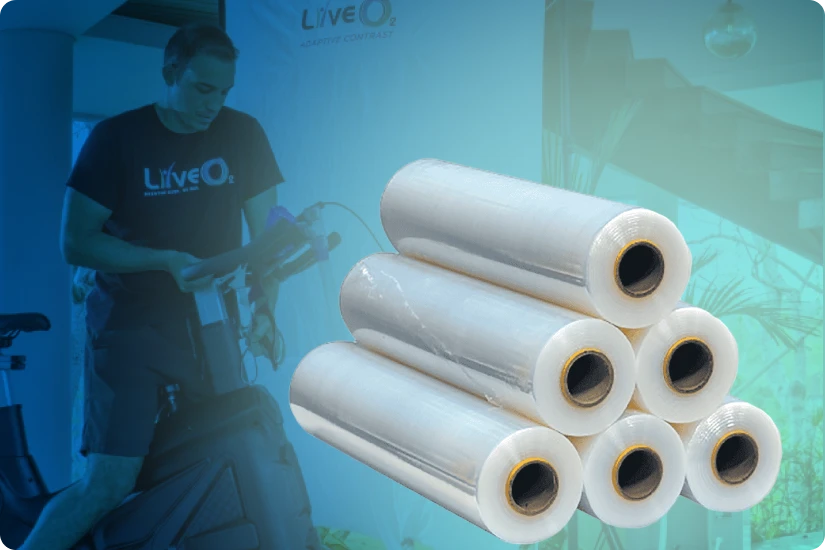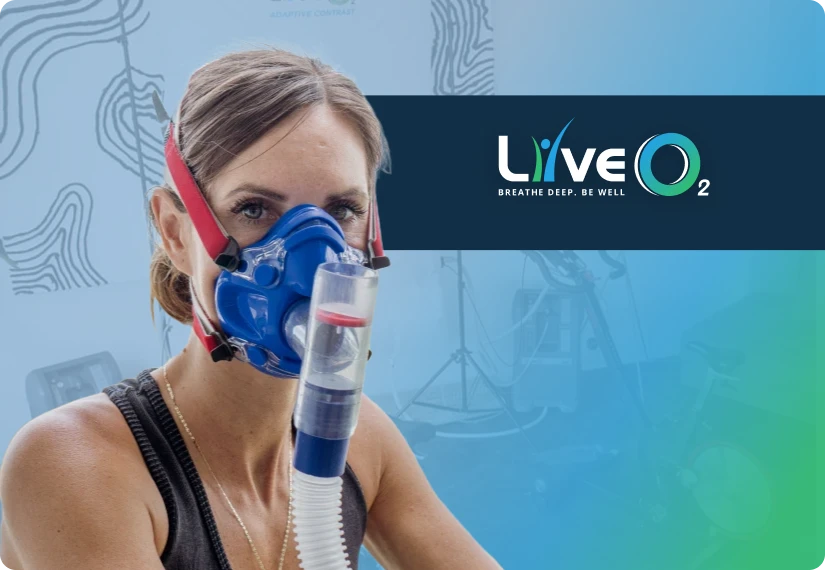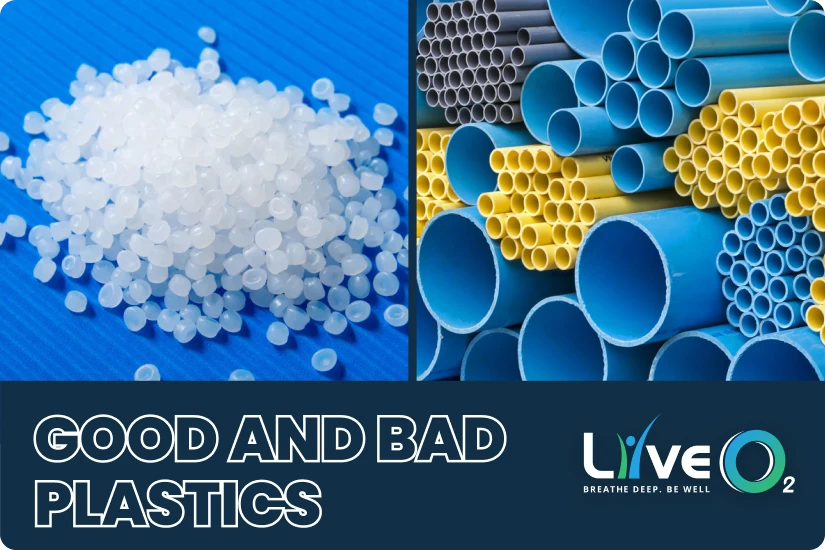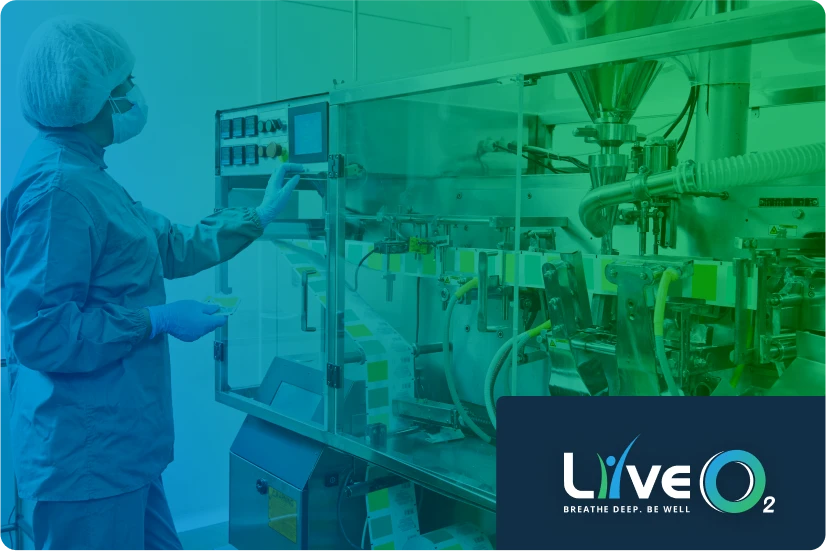There are two answers:


There are two issues with gas reservoirs:
LiveO2 reservoirs do not release oxygen until they are full. There is no measurable difference in fill times for sealed versus unsealed reservoirs. Unsealed designs avoid trapping gasses in the air compartment.
LiveO2 reservoirs retain oxygen for several hours using a layer of plastic which is about as thick as a food wrap. This tiny-thin layer minimizes the amount of chemicals in the product during manufacture and enables them to escape as fast as possible, long before LiveO2 leaves our warehouse.
LiveO2 reservoirs include a network of tiny holes that open when the reservoir is pressurized to allow excess oxygen to escape. This construction avoids adhesives and unnecessary parts – but presents over-pressurization. We also include a gas-tight zipper to allow rapid drainage and inspection. This basic design to minimize the amount of plastic in LiveO2 reservoirs.
Our experience with weld-able plastic liner products created unresolvable defects:
LiveO2 avoids all of these issues.


With 7 years of development and several design iterations we have developed the highest quality reservoir on the market today.
Our reservoir integrates a lightweight yet durable design that is highly resistant to rips and puncture with a woven nylon protective shell and a non VOC inner liner.
The Adaptive Contrast reservoir design integrates both the oxygen chamber and high altitude chamber into the same reservoir preventing the need for bulky secondary altitude reservoirs and additional hoses. Our streamline design makes setup a breeze.
Our early product versions used a dark tightly sealed reservoir until we discovered that is IS possible for moist air to back-flow into the reservoir. While this was rare and due to user error or storage in very moist environments, it was possible for moisture to enter the reservoir and cause mold.
We upgraded the design to our distinctive “white” color and added an inspection/drainage port enables:


Any plastic is like a sponge holding chemicals.
Every plastic is made by taking a cocktail of chemicals which dissolve molecules that link together as the plastic cures. The chemicals remain dissolved in the plastic long after the plastic cures. Curing is the chemical process that converts the plastic from a liquid into a solid.
These chemicals are called Volatile Organic Chemicals, or VOCs. Think of any plastic as a sponge. Once the plastic cures, the chemicals are trapped in plastic much like a sponge holds water. This is true for all plastics regardless of their intended use including food and medical applications.
These gasses are generally non-toxic when used to hold food products or even in medical applications.
Plastic made for a medical or food storage have about the same amount of the same gasses trapped inside. While these gasses are not toxic in small amounts, they are what make plastic items smell bad.
It is very important to control and limit accumulation of these gasses in breathing circuits because reservoirs like LiveO2 expose a large surface area, about 70 square feet, of plastic to contain the breathing gas without pressure.
Over time these gasses escape so over time they become “clean” as the embodied volatiles diffuse through the thickness of the plastic and eventually escape. The thickness of the plastic is very important because it determines two things:
There are several different types of plastic. The two main are polyethylene and poly vinyl chloride. Food and medical grade products are usually manufactured with polyethylene because it does not release gasses which are recognized toxins.
Poly vinyl chloride is another story. PVC is known to release toxic gasses and should never be used in any way in any breathing system.
Any breathing system that uses clear plastic uses PVC and should be returned to the manufacturer as unsafe.
LiveO2 only uses biologically inert silicone tubing and the thinnest possible layer plastic to retain oxygen.


Take a trash bag and smell inside the box. Do you smell the odor? This odor is from the chemicals produced during polyethylene manufacture.
The gasses were trapped in the plastic during manufacture. The thin sheet of plastic is like as sponge. These chemicals will continue to escape for years.
The thick roll of plastic inside the box will continue to have an odor almost forever because it takes a long time for the chemicals to diffuse through the thickness of multiple layers. This is why a roll of trash bags always smells like plastic.
Now take out a single trash bag and lay it flat for a week. When you smell the outside – most of the odor is gone. Now open it and smell the inside. Phew!
The outside didn’t smell much because those gases escaped into the air and dissipated. The gasses that dissipated inside the bag accumulated. The thicker the trash bag – the longer it takes for the gasses to escape. The bigger it is, the more gas will accumulate on the inside.
A 900L air reservoir is a really big bag. Are you starting to see why it is SO important to minimize the plastics and NOT to seal the bag?
The bigger the container the more square footage the more plastics. It took us several years to find materials that were durable and had the smallest possible amount of plastics so that we could deliver a clean and safe user experience to LiveO2 users.
